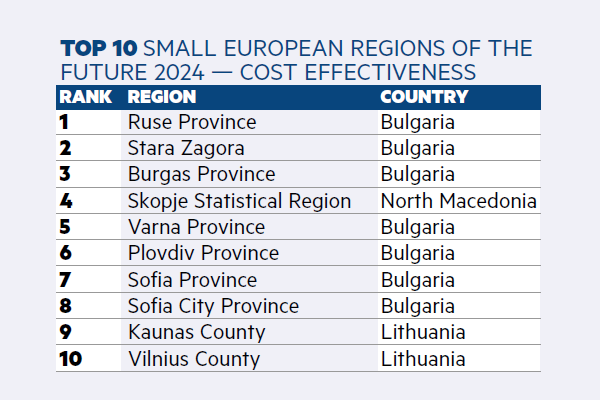Nearshore software development has become more than a budget-friendly solution—it’s a strategic move many businesses use to stay competitive.
So, what makes it such a compelling option? How can you reap its benefits and align it with your project needs?
To answer that, we cover:
- What this outsourcing model involves
- The different types of software outsourcing models
- The core benefits of nearshoring software development
- Tips for choosing the right nearshore development provider
What is Nearshore Software Development?
Nearshore software outsourcing is when a company delegates software tasks to development teams in geographically close countries sourced by a provider working in a matching time zone.
Additionally, the value lies in expanding hiring options outside the local market and reducing communication barriers with enough cost efficiency and quality.
Though not always the cheapest option, nearshore development balances the advantages of offshore outsourcing and local hires. Specifically, it is most suitable for custom development projects that require close coordination, flexibility, and a strong partnership.
The 3 Types of Software Outsourcing Models
In outsourcing software development, there are three main models to choose from – nearshoring, offshoring and onshoring.
| Outsourcing Model | Time Zone | Cost | Cultural Differences |
|---|---|---|---|
| Onshoring | Same country | High | Negligible |
| Nearshoring | Close (0-3 hours) | Moderate | Minimal |
| Offshoring | Distant (5+ hours) | Lower | Significant |
Nearshoring
Involves software development outsourcing to a geographically close company in a different country. It allows moving operations to a more cost-effective location with fewer time zone differences and cultural gaps. For instance, a Western European company can outsource in Southeast Europe because of similar working hours and fewer cultural differences.
Best suited for:
- Scale-ups and startups that experience growth but need careful resource management and high-quality professionals.
- Sophisticated projects like legacy software updates or custom application development.
- Businesses seeking long-term, stable partnerships for iterative development work.
Offshoring
Refers to a company outsourcing software tasks to a vendor in distant countries. These countries are several time zones away, have different economic conditions and have significant cultural differences. Generally, this model is the least costly option but potentially most volatile. Popular destinations include India and other parts of Asia.
Best suited for:
- Routine tasks or non-critical development work where cost efficiency is the top priority.
- IT support or maintenance with no need for extensive management.
- Short-term or low-risk projects, where usual barriers have little impact on outcomes.
Onshoring
Onshoring refers to IT outsourcing within the same country. While it eliminates time zones, cultural differences, and contractual or compliance problems, it is the most expensive option and may be less flexible than the other approaches.
Best suited for:
- Enterprises with strict compliance or data security standards and necessary local jurisdiction.
- Sensitive, high-visibility projects, especially in regulated industries.
- Close, in-person collaboration, where real-time decisions are crucial.
The Benefits of Nearshore Development
The unique blend of nearshore outsourcing creates an environment where collaboration between clients and development teams thrives. Frankly, these benefits may guide you in choosing this model, as they directly contribute to achieving your project goals and long-term success.


Geographical Proximity and Time Zone Alignment
A software development project demands high levels of coordination. Whether updating legacy applications, extending core functionalities, or crafting an MVP, the ability to sync up is invaluable.
Advisably, product owners from the client side should work closely with the outsourced team. The opportunity lies in combining the strengths of in-house and outsourced talents to drive progress. Above all, the location is crucial for quick decisions and keeping projects on schedule and within scope.
Also, the minimal time difference combined with short flight distances allows in-person meetings when necessary.
To demonstrate clearly, we’ll use our case. As a provider, our teams operate in North Macedonia and use CET (Central European Time). We are a short flight away from Western European countries and have no time difference with the following regions:
- Benelux (Belgium, Netherlands and Luxembourg)
- DACH (Germany, Austria and Switzerland)
- Scandinavia (Norway, Sweden and Finland)
The result? Ease of communication and no jet lag when meeting with your development partners.
Additionally, partnering with companies in geographically and legally familiar regions can simplify contracts and compliance, reducing potential risks.
Cultural Similarities and Improved Communication
Effective communication and a cultural match are crucial in nearshore outsourcing. But speaking proficient enough English is only one part of the story. Another aspect is understanding the work culture and business etiquette on both ends. Finding this common ground stimulates a more intuitive collaboration between teams, reducing problems often found in cross-cultural interactions.
Qualitative insights are not the only basis of this claim. A study by the University of Aberdeen on outsourcing highlighted recognising and managing cultural differences right from the start. Moreover, it showed that cultural differences, especially in service orientation, can affect the success of outsourcing relationships. Over 75% of respondents stressed the need to consider culture more carefully in future contracts.
In line with this, a nearshore development company should implement measures such as workshops and thorough onboarding processes. Our detailed guide on how to set up a nearshore development team explores practical steps to set yourself up for success.
Flexibility and Scale
Nearshore software development gives businesses the agility to adapt as their needs evolve. Such flexibility can be a game-changer for managing existing projects and scaling for future growth.
Additionally, the drive towards digital transformation across various sectors has escalated the demand for skills in software development. The trend, coupled with the findings from Deloitte’s 2022 global outsourcing survey, underscores talent acquisition challenges. With 50% of executives mentioning it as a limitation, the need for a broader, vetted talent pool is apparent.
Costs often dominate outsourcing discussions. Yet, nearshoring presents a balanced approach. Specifically, it is not just a cutback move but a mix of quality and cost-effectiveness. As a model, it sidesteps the high costs associated with local recruitment and the uncertainties of offshore engagements.
Furthermore, we outline a few overlooked and emergent European destinations to support this claim. Recent rankings from fDi Intelligence have spotlighted cities and regions that combine cost-effectiveness with a promising business environment. In the report, several attractive hubs appear, presenting an opportunity for businesses looking to scale sustainably.


Source: fDi’s report on European Cities and Regions of the Future 2024
Choosing a Nearshore Development Company
What should you prioritise as a business when making this decision? Here’s what to focus on:
- Set Clear Expectations: Look for someone realistic from the start of the process. Avoid companies offering immediate availability because rushing the process may lead to misaligned skills and project requirements. Transparency is key.
- Use Your Network: Leverage industry contacts and recommendations to identify trustworthy providers.
- Check Credentials: Always assess past work and ask for case studies with real-world examples of completed projects demonstrating their capabilities. Testimonials alone are not enough.
- Strategic Partnership: Opt for a nearshore company that values partnership over transaction. Such a provider can become an extension of your in-house team and invest in your long-term success.
- Team Stability: Consistency matters. Providers with strong retention rates and loyal teams offer stability. For instance, our team boasts an average retention rate of three years, guaranteeing a dedicated team invested in your growth.
- Legal and Contractual Simplicity: Choosing a nearshore development company within familiar legal jurisdictions can ease compliance with regulations. For instance, our engineering teams are in North Macedonia, and we have an operational base in the Netherlands, giving clients within the EU a more straightforward path to managing contracts and legal considerations.
Agile Nearshore Development with Flexibility and Expertise
As a nearshore outsourcing company, we’ve refined our expertise by tackling projects across diverse sectors:
- Hospitality
- Cleaning
- Leisure
- Recycling
- E-commerce
- IoT and Industry 4.0
Our project portfolio is varied, demonstrating our ability to adapt:
- Web and mobile applications
- SaaS platforms
- Intranet solutions
At the core of our solutions is a robust technology toolkit including (but not limited to):
- .Net Technologies: .NET Framework, .NET Core, .Net X (X = latest version), Blazor
- Web Development: PHP (Symfony, Laravel), Python (Django)
- Client-Side Libraries/Frameworks: Vue.js, Angular, React, JavaScript, TypeScript, jQuery
- Mobile and Cross-platform: Android, iOS, Xamarin/.NET MAUI, Flutter, Node.js
- Cloud computing platforms: Microsoft Azure, Amazon Web Services, Google Cloud
- Methodologies: Agile, Scrum, Kanban, Scrumban, adapting to workflows that suit you.
We form teams of skilled professionals tailored to your needs, including:
- Software engineers
- QA engineers
- DevOps engineers
- UX/UI designers
- Other profiles, based on project requirements
Ultimately, there is no one-size-fits-all solution when choosing whether to outsource or decide on the right model for your software development demands. However, a reasonable level of awareness and an open conversation is a great place to start.
That being the case, we invite you to book a free consultation. We’re open to exploring how we can bring your project to life and contribute to your success.



